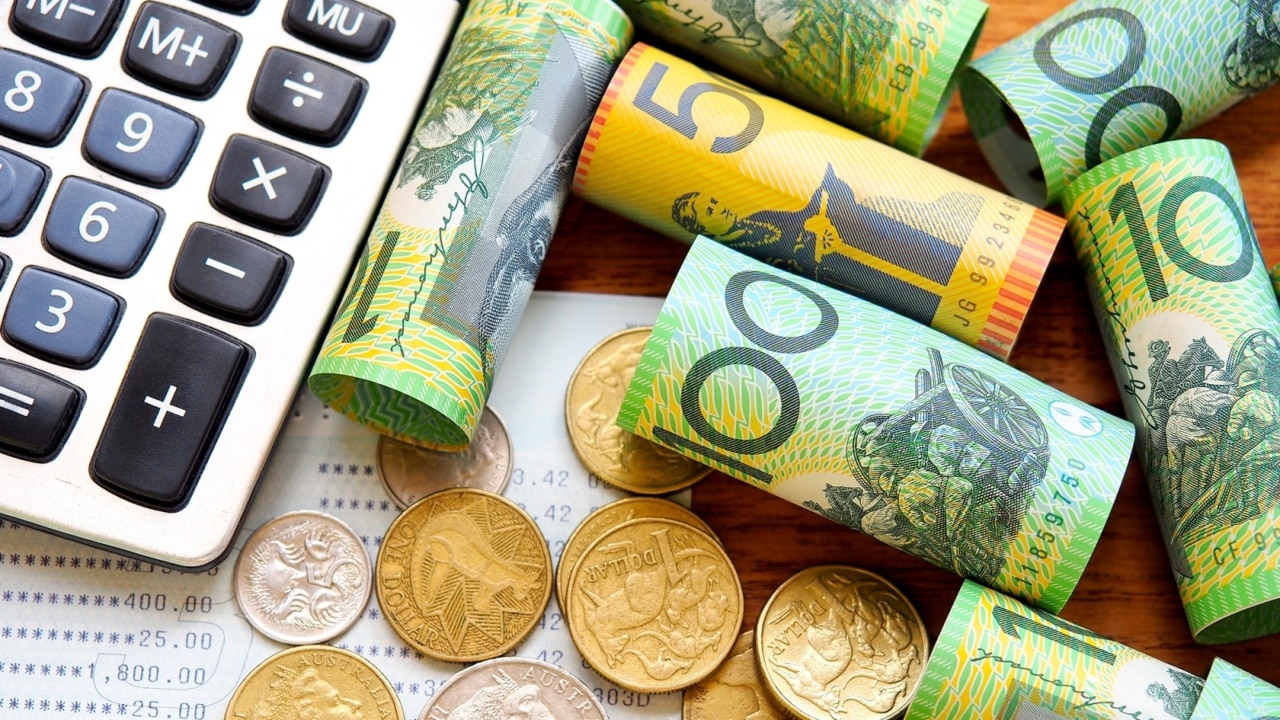Five major COVID-19 money changes impacting Australians
Coronavirus has impacted the way we view our finances. Here are some of the major changes we’ve experienced in recent months, and what may come next.

Business
Don't miss out on the headlines from Business. Followed categories will be added to My News.
For better or worse, we’ve experienced significant changes to the way we manage our money during the coronavirus pandemic.
While in lockdown, many of us have been forced to overhaul our finances to ensure we can come out of this pandemic the other end – and without being thrown off a financial cliff.
Every household has been affected differently: these are five major money changes experienced recently, and a look at what may come next.
NO CASH
Many businesses have pushed consumers to pay with card instead of cash during COVID-19 to prevent the spread of disease that could occur by paying with notes and coins.
The Reserve Bank of Australia’s head of payments policy, Tony Richards, said as a result, “many consumers have decided they would rather use their card than cash”.

But he expects this trend won’t last forever.
“We expect that many of those who prefer to use cash will go back to using cash, but some people may find they are happy to continue using their card more often,” Mr Richards said.
The RBA’s consumers payments survey in 2019 found there were still many households that used cash for almost all transactions.
The report showed about 27 per cent of transactions were done using cash – this had plummeted from 62 per cent back in 2010.
Financial adviser Scott Haywood said using cash “makes money real”.
“When you pay by card you don’t have that feeling of taking money out of your pocket and paying for something with the money that you’ve earned,” he said.
“We definitely are spending more with card because it doesn’t feel like you’ve done a hard day’s work and you’re pulling money out of your pocket.”
TAP AND GO
Changes to contactless “tap and go” limits were implemented last month, rising from $100 to $200.
This has been rolled out by most banks but not all, allowing customers to make more expensive transactions without the need to touch buttons on payment PIN pads.
The payments self-regulatory body, the Australian Payments Network’s chief executive officer Andy White, said that the increase of the contactless PIN limit from $100 to $200 would be reviewed next month alongside the government’s changes to the country’s wider response to COVID-19.
“The change was made to reduce the number of people needing to physically touch a PIN pad during COVID-19,” he said.
“It was introduced as a temporary measure initially for three months and can be extended if necessary.”
The new payment limit also applies to customers using digital wallets via other payment devices such as smartphones and smartwatches.
SHOPPING ONLINE
Retailers had to adapt quickly to improve their online shopping experience during lockdown, said Australian Retailers Association chief executive officer Paul Zahra.
He said this included new offerings such as click and collect options or kerbside delivery to ensure customers could still get their goods.

“We have witnessed a big spike in online shopping during March and April,” Mr Zahra said. “Australian Bureau of Statistics figures indicate a rise of about 15 per cent in March.
“We expect in the longer term the online sales habit will continue and we may see online grow towards around 20 per cent of total retail sales quite quickly.
“COVID-19 has definitely accelerated many trends already happening in the retail industry including the shift towards online shopping.”
The Mother’s Day weekend saw a boom in customers flocking to shops but Mr Zahra said both bricks and mortar presence and online stores would remain critical.
“They are complementary, each strengthening the other,” he said.
“Customers have come to expect these new options, and we expect most retailers now will be geared towards giving their customers more choice.”
FALL IN CREDIT USE
The latest Reserve Bank of Australia figures show the number of personal credit card accounts has fallen to its lowest level in almost a decade.
RBA statistics show in March the number of credit card accounts fell by about 978,000 compared with 12 months prior.

There’s no doubt the COVID-19 pandemic has made consumers much more aware of their spending, particularly on credit cards.
This is one of the most expensive ways to pay for things, given most cards attract double-digit interest rates and some are higher than 20 per cent.
The RBA figures show credit card debt in March totalled $41.5 billion and $26.9 billion was accruing interest.
This is down from March 2019 when $45.5 billion was owing and $29.5 billion was accruing interest.
People are being more conservative around the debts they are willing to rack up.
REPAYMENT HOLIDAYS
Many financial institutions have offered cash-strapped customers the ability to pause repayments on their loan products including personal loans, credit cards and home loans.
Mr Haywood said the hundreds of thousands of Australians who had been given repayment holidays should make the most of the time off from paying back debt.
“The only reason you have got it is because you have experienced hardship,” he said.
“Enjoy the holiday period but you also have to think about how you will manage the payments at the end of the holiday.”
Originally published as Five major COVID-19 money changes impacting Australians



